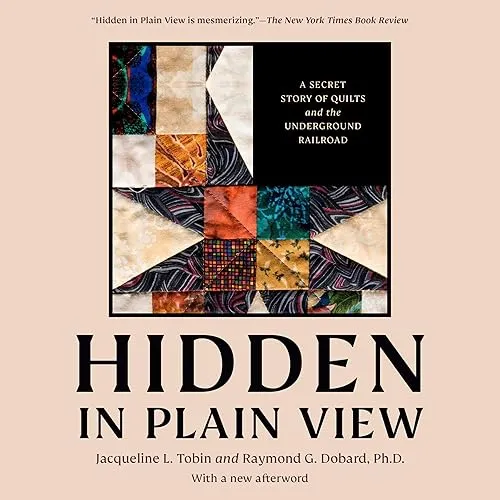
Free Download Hidden in Plain View: A Secret Story of Quilts and the Underground Railroad (Audiobook)
English | ASIN: B0CZ7MQGCH | 2024 | 5 hours and 33 minutes | M4B@128 kbps | 308 MB
Author: Jacqueline L. Tobin, Raymond G. Dobard, Cuesta Benberry, Floyd Coleman, Maude Southwell Wahlman
Narrator: Janina Edwards, Leon Nixon
"There are five square knots on the quilt every two inches apart. They escaped on the fifth knot on the tenth pattern and went to Ontario, Canada. The monkey wrench turns the wagon wheel toward Canada on a bear’s paw trail to the crossroads-" And so begins the fascinating story that was passed down from generation to generation in the family of Ozella McDaniel Williams. But what appears to be a simple story that was handed down from grandmother to mother to daughter is actually much, much more than that. In fact, it is a coded message steeped in African textile traditions that provides a link between slave-made quilts and the Underground Railroad. In 1993, author Jacqueline Tobin visited the Old Market Building in the historic district of Charleston, South Carolina, where local craftspeople sell their wares. Amid piles of beautiful handmade quilts, Tobin met African American quilter Ozella Williams and the two struck up a conversation. With the admonition to "write this down," Williams began to tell a fascinating story that had been handed down from her mother and grandmother before her.
As Tobin sat in rapt attention, Williams began to describe how slaves made coded quilts and then used them to navigate their escape on the Underground Railroad. But just as quickly as she started, Williams stopped, informing Tobin that she would learn the rest when she was "ready." During the three years it took for Williams’s narrative to unfold-and as the friendship and trust between the two women grew-Tobin enlisted Raymond Dobard, Ph.D., an art history professor and well-known African American quilter, to help provide the historical context behind what Williams was describing. Now, based on Williams’s story and their own research, Tobin and Dobard, in what they call "Ozella’s Underground Railroad Quilt Code," offer proof that some slaves were involved in a sophisticated network that melded African textile traditions with American quilt practices and created a potent result: African American quilts with patterns that conveyed messages that were, in fact, essential tools for escape along the Underground Railroad.










Leave a Reply
You must be logged in to post a comment.